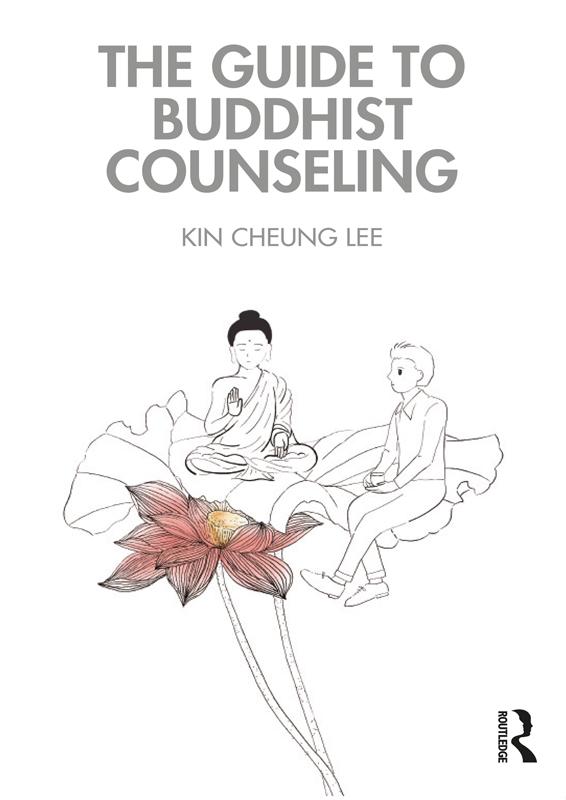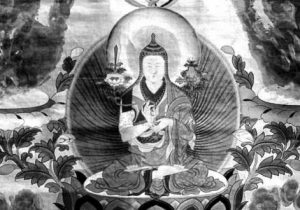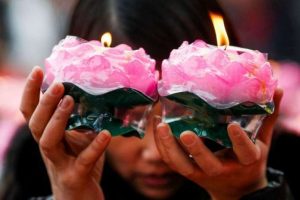On 12 March, Asia Society Hong Kong hosted the book launch of Dr. Kin Cheung Lee’s The Guide to Buddhist Counseling (Routledge 2023). Attendees joined The University of Hong Kong (HKU) lecturer for an enriching talk as he outlined core concepts in his book and described case studies from his extensive experience. The ideas and case studies featured in Dr. Lee’s book add up to a systematic integration of the Buddhist teachings into a structured model of counseling.
As someone who scratched the surface of pastoral theology in my early years of university, I find this book inspiring and potentially a milestone publication. One professor I particularly admired in my undergraduate period was a lay preacher in the Uniting Church of Australia, who had written several books on Trinitarian models of counseling with applicable case studies. I re-read those books often for a while, and for many years afterward wondered when a Buddhist equivalent might arise—until now.
It seems fair to say that in The Guide to Buddhist Counseling, enough ground has been covered for me to conclude that this is indeed that Buddhist equivalent to my old teacher’s writings, especially since three essential foci are addressed: Buddhist philosophy; its place in a conceptual model of Dharma-inspired counseling; and the consequent interventions and techniques.
The book is structured into 12 chapters, covering a comprehensive range of matters for the pastoral carer or counselor.* As Dr. Lee described in an interview with BDG, the core intervention is the Note, Know, Choose model, a three-phase, psycho-spiritual treatment approach. “Note” is to cultivate mind stability and awareness, “Know” is to foster the client’s insights about their underlying unskilful habits, including clinging and aversion, and “Choose” is to practice moving in an alternative direction, to begin exercising the muscle of control over the mind to make more wholesome decisions.
The Four Noble Truths, as with all orthodox Buddhist work, form the conceptual core of Buddhist-oriented psychotherapeutic work. Dr. Lee aligns the first truth of dukkha with the idea of compassionate attunement; the second truth of samudaya with assessment; the third of nirodha with conceptualization; and magga with intervention. (40) Another important launching-off point is that true Buddhist counseling starts from non-self (anatta) as the basis of treatment, rather than the presupposition of a self, as is common in Western psychology: “The treatment focus should emphasize reducing the client’s grasping, especially the clinging to the notion of a reified self.” (34) Dependent origination, and the Noble Eightfold Path, two other core Buddhist teachings, also play a central role.
It turns out that I was not alone all those years ago in wondering when it would be “our” turn to develop Dharma-centric frameworks for pastoral care and psychotherapy. In fact, this yearning to plug the gap in the literature was what drove Dr. Lee to begin this project, all the way back when he was a student of psychology in the US. He admits that Buddhist leaders and teachers are far behind their theistic counterparts (Christian, Islamic, and Jewish pastors and psychotherapists) with regard to knowledge, application, and depth of intervention.
“There is lots of room for improvement,” Dr. Lee says bluntly. “I hope this book can at least provide a reference for many others to see Buddhism as a viable treatment of choice for mental health in contemporary society. Buddhist pastoral care has so much potential, and the idea of mental health counseling can be a helpful supplement for their work. From my experiences working with monastics and Buddhist lay students, they are very knowledgeable about the Dhamma and skilled in providing Dhamma talks in general.”
The reality, however, is that most of these people have not received any training in counseling or related techniques. For Dr. Lee, these include different ways of listening deeply, asking processing questions to help clients reflect, noticing and pointing out emotional suffering and clinging, or using some mental or behavioral techniques. He notes: “Their spiritual work, therefore, may become challenging for certain clients when traditional ways of teaching Buddhism may not work effectively. I hope that this book can add another way of teaching Buddhism, in a sense, to the toolboxes of Buddhist pastoral care providers. I believe that Buddhist counselors and psychotherapists need to embody the Buddhist teaching and use it in the process of counseling. Hopefully, it can an open conversation to invite more interested professionals and lay students to join the development of Buddhist counseling, thereby expanding and defining it in ways that best fit the needs of people they serve.”
The skilfulness of the mind relies on being aware from moment to moment, invoking the necessary skill of mindfulness. A critical difference is that “Right Mindfulness and the common concept of modern mindfulness is the ‘right’ component. Modern mindfulness emphasizes the present moment awareness to soothe the mind without judgment, while traditional Buddhist mindfulness emphasizes the rightness of a calmed mind that realizes the true nature of things, such as non-self.” (43)
Dr. Lee has noted at various points that the carer or counselor is as much a focus of his program as the client. His book contains many pointers toward “spiritual formation” that result in a cultivated counselor. This is important because, as Dr. Lee notes, across religious traditions in counseling and psychotherapy, “spiritual formation is a core foundation in training chaplains, ministry care providers, and other spiritual care providers. It is a common belief that the ability to form and flourish personal and congregational spiritual lives enhances one’s capacity to foster the spiritual lives of others.” (57)
Buddhist spiritual formation takes on many guises for the author, from advising counselors to do some on-cushion practice—at least 20 minutes of sitting meditation on foundational mindfulness or compassion meditation per day seems realistic (59)—to helpful “tip” boxes for counselors to use, such as one on contemplative questions. (“During the moment of suffering, what was my first immediate response and choice?” “How did my suffering change with my choice?” “What would making the more skillful and wholesome choices feel like at the moment of suffering?”) (174–75) At heart, spiritual formation is an engagement by the counselor in Buddhist discipleship as a servant of the Three Treasures:
Buddhist counselors should also abide by Buddhist ethics and take vows to follow at least the five precepts to guide their Buddhist counseling practices. The calming and therapeutic presence of a cultivated Buddhist counselor can be one of the most therapeutic factors in the process of counseling. In particular, such a counselor will have an enhanced capacity to notice the personal causes of suffering in clients. (57)
Dr. Lee is still waiting on more responses to the book, admitting that the reception remains modest for now. “Certain students and colleagues (both in psychology and Buddhist studies) have contacted me to say how the easy-to-read style, authentic use of myself as examples, and the illustrations of dialogue and case examples are very helpful,” he said before the book launch at Asia Society Hong Kong. “In general, some people acknowledge the value of having a structured Buddhist counseling model that gives a clear conceptualization model as well as interventions.”
Will the diverse institutions and leaders of Buddhism pick up on this clarion call for a richer engagement between Asian philosophy and the Western foundations of counseling and psychotherapy? Dr. Lee’s book is rigorous enough to provide a solid foundation upon which Buddhist writers, leaders, and chaplains can conceptualize Dharma-centric models of care. Some institutes in the West, such as Naropa University in Boulder, Colorado, are already delving into models of Buddhist counseling, while HKU’s own Master of Buddhist Counselling degree (MBC) is training students to be able to see clients in the comfort and tranquility of dedicated rooms in Hong Kong’s Wang Fat Ching She temple. This practical work shows good promise for a generation of Buddhists competently trained in modern methods of psychotherapy and care. Nevertheless, there is still much theoretical work to be done, and many more case studies are needed to set precedents and guide future practitioners.
* “Brief History of Buddhism as an Indigenous Psychology,” “Buddhism and Science: Implications to Buddhist Counseling,” “Major Theoretical Assumptions in Buddhist Counseling,” “Overview of the Note, Know, Choose Intervention Model,” “Buddhist Spiritual Formation as a Counselor,” “Assessment in Buddhist Counseling,” “Buddhist Counseling Case Conceptualization,” “Intervention and Techniques: Note,” “Intervention and Techniques: Know,” “Intervention and Techniques: Choose,” “Termination,” and “Ethical Considerations in Buddhist Counseling.”
References
Lee, Kin Cheung. 2023. The Guide to Buddhist Counselling. Oxfordshire: Routledge.
Related features from BDG
Impermanence Is in Sight
Embrace Your Grief

















Looks like a good book on a good subject!